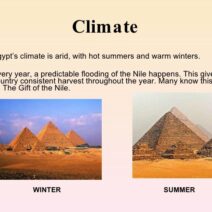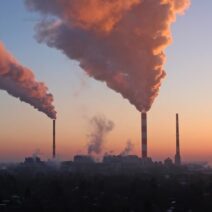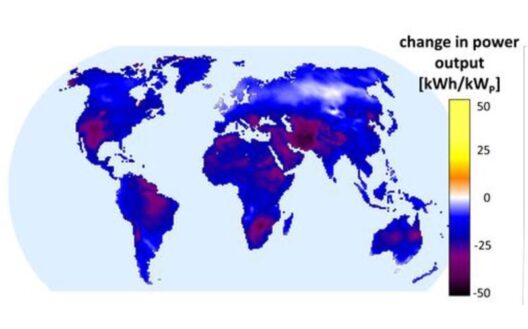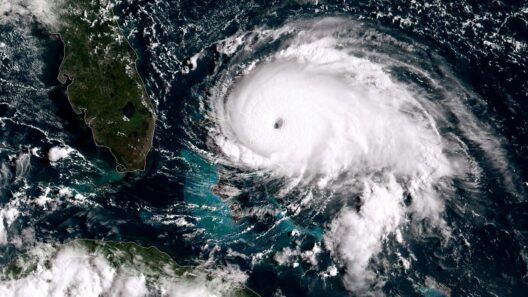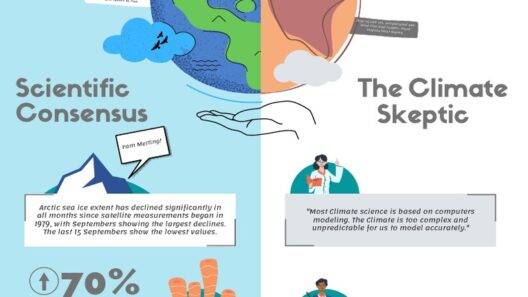The topic of climate change often elicits impassioned discussions and waves of concern. How many times have you witnessed an unusually ferocious storm or an unrelenting heatwave, only to be left wondering if these phenomena are mere coincidences or indicative of something far more significant? This exploration delves into the climate paradox: how global warming fuels extreme weather events, unraveling the complexities that intertwine our planet’s temperature with the volatility of its weather systems.
Global warming, primarily attributed to human activities such as burning fossil fuels, deforestation, and industrial processes, has undeniably escalated atmospheric temperatures. Since the late 19th century, Earth’s average temperature has increased by approximately 1.2 degrees Celsius (2.2 degrees Fahrenheit), a seemingly slight change with profound consequences. This rise in temperature profoundly influences natural systems, forging an intricate link between warming and the severity of various weather events.
To understand this connection, one must first comprehend the role of the atmosphere. The atmosphere is not merely an invisible blanket around our planet; it is a dynamic system that circulates energy and moisture. As global temperatures rise, the atmosphere holds more heat and moisture, creating an environment ripe for extremes. For instance, warmer air can retain more water vapor leading to heavier rainfall. Ironically, while some regions may experience flooding due to increased rainfall, others face drought conditions as precipitation patterns shift.
Take hurricanes and tropical storms, for instance. Warmer ocean temperatures fuel these massive storm systems. According to climate scientists, the intensity and frequency of hurricanes could increase as our oceans warm, leading to increased destruction and loss of life. The paradox emerges: while global warming manifests as rising temperatures and melting ice caps, it simultaneously preconditions the Earth for more violent and unpredictable weather phenomena.
Consider the paradox in rising sea levels. As polar ice melts, the sea level rises, threatening coastal communities and ecosystems. This factor can also exacerbate storm surges, enhancing the destructive forces of hurricanes and other maritime storms. The increasing frequency of such extreme weather events leads to a troubling cycle, where those most vulnerable and least prepared bear the brunt of climate change’s destructive potential.
Transitions in precipitation patterns present a perplexing phenomenon. Regions once known for their temperate climates are now experiencing unseasonable warmth or erratic rainfall. Increased evaporation from warmer oceans leads to both flooding and drought. For instance, the paradox is vividly illustrated in California, where drought conditions have alternated with intense storm systems, resulting in devastating impacts on agriculture, water supply, and infrastructure. This cyclical unpredictability presents significant challenges for policymakers and communities who must adapt to shifting weather patterns while addressing conservation and resource management.
While the evidence of global warming’s consequences intensifies, so does the social impact of extreme weather events. Vulnerable populations, often marginalized, find themselves on the frontline of climate challenges. These communities may lack resources to recover from disasters and are ill-equipped to adapt to changing environmental conditions. As storms, floods, and heatwaves become more frequent and severe, the question arises: how can society restructure itself to mitigate these disparities?
Moreover, the psychological toll on populations grappling with extreme weather cannot be overlooked. The phenomenon of climate anxiety is on the rise as individuals wrestle with the tangible impacts of climate change. The paradox extends beyond physical consequences, delving into the realm of mental health as communities feel a growing sense of precarity. How can we address not only the physical but also the emotional ramifications of a climate-aberrant reality?
This interconnection of climate change with social issues poses a formidable challenge. Climate actions often emphasize mitigation—reducing greenhouse gas emissions and transitioning to renewable energy. Yet, adaptation is equally imperative. While we strive to combat the root causes of climate change, how do we prepare communities for the inevitable storms more likely to come?
In the face of these daunting realities, innovation emerges as a beacon of hope. Technological advancements, from renewable energy breakthroughs to innovative agricultural practices, offer potential pathways forward. Implementing adaptive strategies, such as improved infrastructure that can withstand heavy flooding or developing drought-resistant crops, cultivates resilience against the backdrop of extreme weather.
Education plays a crucial role in fostering a communal understanding of climate change. This awareness can drive engagement and motivate individuals to take action within their communities. From advocating for sustainable policies to spearheading local conservation efforts, informed citizens can collaboratively address the multifaceted challenges posed by climate change.
In conclusion, the climate paradox reveals the intricate interplay between global warming and extreme weather events. The rising temperatures that fuel climate change also catalyze volatility in weather patterns, leading to increased natural disasters affecting the most vulnerable segments of society. Addressing these challenges requires a synthesis of mitigation and adaptation strategies, technological innovation, community engagement, and education. The questions that invite reflection and action center around how we can restructure our societal frameworks to evolve alongside our changing climate. How do we build resilience in the face of uncertainty? The answers lie within our ability to confront these challenges collectively, ensuring that we not only survive but thrive in an increasingly unpredictable world.

